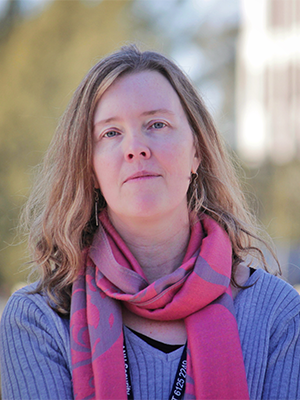
- Free Article: No
- Contents Category: Commentary
- Custom Article Title: ‘The story of our language is the story of us: Will the Australian National Dictionary Centre go bung?’
- Review Article: No
- Article Title: The story of our language is the story of us
- Article Subtitle: Will the Australian National Dictionary Centre go bung?
- Online Only: No
- Custom Highlight Text:
The proposed abolition of the Australian National Dictionary Centre represents a significant retreat from the Australian National University’s long-standing commitment to supporting a national public culture. This should alarm all of us, not least the Australian taxpayer who contributes $220 million a year – received by no other Australian university – so that the ANU can conduct significant research ‘supporting the development of Australia’s national unity and identity, including by improving Australia’s understanding of itself and the history and culture of its Indigenous peoples, its Asia-Pacific neighbours, and its place in the international community’.
The ANU doesn’t talk much about its National Institutes Grant (NIG); perhaps it appears unseemly when no other Australian university gets special funding on this scale. This special grant reflects the national purpose that was central to the original conception of the university – as John Dedman, the Minister for Post-War Reconstruction, put it when introducing the bill that established the ANU, the national university was intended to ‘confer very great benefits on our people and, at the same time, help us to assume our proper place in world affairs’.
From the outset, the ANU was understood as having such a nation-building and nation-defining purpose. Accordingly, it initiated major national projects that would never have been undertaken in a state university funded for more limited purposes. The Australian Dictionary of Biography (ADB) was established in 1959. It has historically been funded by the NIG. It is being cut at present, too, but will at least survive in a modified form. The Australian National Dictionary (AND) came later, initiated in the 1970s by Bill Ramson, whose Australian English: An historical study of the vocabulary, 1788-1898 (1966) was proudly published by ANU Press. Like the ADB, the AND has historically been funded by the NIG, although on a more modest scale.
The first edition, The Australian National Dictionary: Australian words and their origins, appeared in 1988: a kind of bicentennial gift to the nation from the university established forty years previously to perform just this kind of work. Modelled on the Oxford English Dictionary, the AND is founded on historical principles, providing a detailed origin and definition for each word and demonstrating that word’s historical evolution across time through the use of quotations from a range of sources, from newspapers, magazines and manuscripts, through Australian literature, radio, film and television, to blogs, memes and social media.
In the same year as the publication of the first edition, the Australian National Dictionary Centre was established to support further research into Australian English. Many publications followed, from detailed books on the language of the convict era, and of Australians at war, through to studies of regional vocabularies. A massive two-volume revised edition appeared in 2016, the culmination of years of painstaking scholarship. Staff in the Centre produced major studies of Australian English, such as Bruce Moore’s Speaking Our Language: The story of Australian English (2008) and Amanda Laugesen’s recent Australia in 100 Words (2024). The Centre also worked with Oxford University Press on a suite of Australian Oxford dictionaries which, in subtle ways, have shaped the sensibilities of generations of Australians and are found throughout Australia’s education system.
No other Australian university undertakes the lexicographical work of the Centre. This is the one place in Australia where the historical origins and evolution of words are examined; not merely for the intrinsic value of such an exercise, but because these words have come to define Australian culture, both settler and First Nations. These ‘word histories’ come together to narrate the nation: its history, its culture, and its identity. The story of our language is the story of us. The Centre’s ‘Australian Word of the Year’ emerged as a kind of national celebration of the continuing dynamism of Australian English as well as the creativity of our people. Perhaps one of the best-known activities of the Centre, these Words of the Year (‘democracy sausage’, ‘strollout’, and ‘Colesworth’ are just a few examples) prompt reflection on and debate about the forces that are shaping Australia.
When the ANU announced on 3 July that, as part of a wider program of cuts, it would cease funding the Centre – which costs the university around $250,000 per year – the AND was being prepared for public, online access, drawing on work undertaken since the publication of the second edition with several hundred new entries ready to go and hundreds more in the works. This work will now be inaccessible for all time.
The Australian National Dictionary was a product of Australians seeking a culture, history, and identity of their own. This bid for cultural and linguistic independence signalled that, as a people, we were unwilling merely to remain as footnotes to someone else’s history, or to tolerate our language being treated as an unfortunate departure from the purity of the original. Here was an Australian bid for cultural and linguistic independence. And here was the Australian National University’s contribution to that effort. Without the dictionary, we run the risk of losing just a little bit more of what makes us distinctive.



Comments powered by CComment